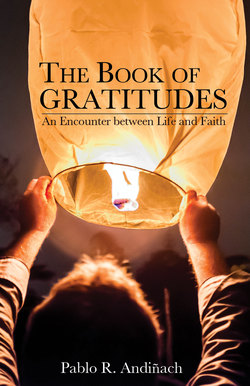Читать книгу The Book of Gratitudes - Pablo R. Andiñach - Страница 24
На сайте Литреса книга снята с продажи.
The Bible of the Bear
ОглавлениеWhen the phrase “In a village of La Mancha whose name I do not wish to recall. . .” was not yet familiar to anyone because many years were still to pass before it was written, the first complete translation of the Bible into Spanish appeared in a print shop in Basel.
Casiodoro de Reina had worked for years to give Spanish-speaking believers a Bible text they could read in their own language. Until its publication in 1569, the Bible could only be read in Latin (the translation known as the Vulgate), a language most common folk didn´t speak, and even if they did, they didn´t have access to any copies.
The editor was called Samuel Biener (his surname means “beekeeper” in German) and in the editorial seal that illustrated the cover he used the figure of a bear towering over a tree, trying to reach a container full of honeycombs. When he published the Bible, he added on the seal, at the foot of the tree, an open book with Hebrew letters spelling YHWH, the name of God in that tongue, which in the Bible text appears as Jehovah. In addition, he placed the following text at the foot in Hebrew and Spanish: “The word of our God remains forever,” taken from Isaiah 40:8.
Because of this seal on the cover, it is known as “The Bible of the Bear.” This translation, with the small corrections made by Cipriano de Valera, is the one that Evangelical people still recognize today as the translation that is most widespread and commonly used in the churches.
There are some characteristics that make this translation a masterpiece. Protestantism insisted in returning to God’s word, and to do so, it encouraged translations into modern languages that would allow its wide distribution among people.
Casiodoro decided to translate the Bible from Hebrew, Aramaic and Greek, the original languages of the Bible text. He avoided translating it from Latin, which would have been simpler but did not ensure maximum fidelity to the message. If, as we know, all translation implies some distance from the original text, how much more distance would there be in a translation from a translation?
Casiodoro’s version includes the so-called apocryphal books in its edition. In this it follows the books found in the Vulgate Bible, since at that time the Protestants had still not established their position on whether or not they should remain as Bible text or be considered works of spiritual edification and useful to the faith but not part of the Sacred Scriptures. At the Council of Trent, held between 1545 and 1563, the Catholic Church had just decreed that several of these books would remain in their Bibles, but in the Protestant world the excision of these works took place gradually during the 17th century.
Finally, the Spanish style that Casiodoro gave to his translation is worthy of note. At a time when the Golden Age of Spanish literature was just beginning, this Bible is a monument to the beauty and plasticity of the Spanish language. He not only transferred a message requiring delicate translation, but he did so with uncommon grace and accuracy.
The Old Testament is written in Semitic languages with which there are no linguistic contacts and, therefore, it is often expressed in phrases and words that are difficult to transpose to our language; the Greek of the New Testament also posed challenges, especially because of its different syntactical structure and the complexity of the message in some of the books. Casiodoro used other previous translations, but improved them by study, erudition and sensitivity until he achieved a text of the highest quality.
When there were still no models of Spanish prose and poetry to open stylistic paths, Casiodoro opened the way for others to continue elevating the language.
To Casiodoro, the Word must have tasted like the best wild honey.
